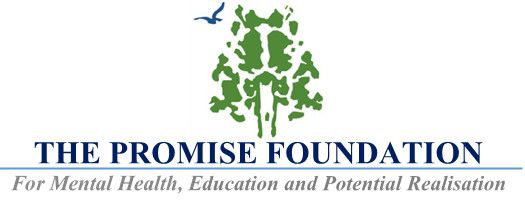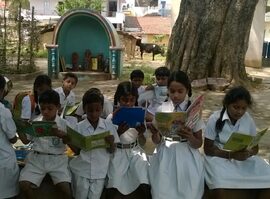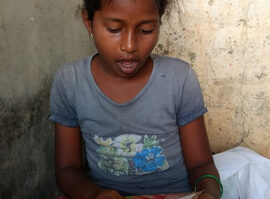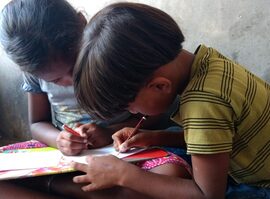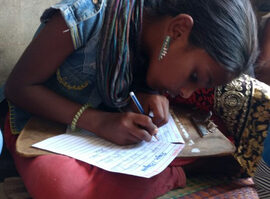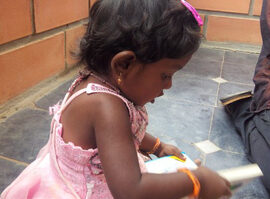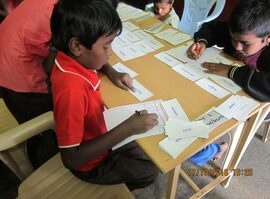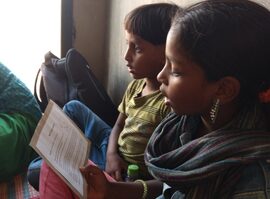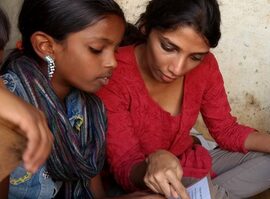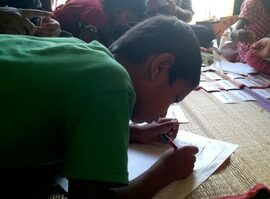Literacy Development
Literacy skills can set a child on a pathway to prosperity and wellbeing. Yet, many children’s literacy needs remain unmet and despite the UN-mandated goal of Education for All. We have come to realise that bringing a child into the school system (enrolment) is a lesser challenge. The more vexing question is why schools do not secure high quality reading and writing skills for all children. The quality of instruction is perhaps one single big reason but there are also several parallel issues such as the politics of access and the absence of opportunity to reinforce skills at home and in the neighbourhood.
Contextual Factors

The opportunities that surround the child vary. The geographical location of the school for example can influence the learning process. Children living in cities seem to have a greater advantage than children in villages. Within rural areas, the distance of a village school from a motorable road can become a further disadvantage—not many books and teaching resources can reach the child.
Another source of inequality is the level of family income. Children from richer homes are also educationally more advantaged. Not only can these children buy more learning materials but the more qualified teachers seem to drift towards well-funded schools that can afford their services. Inequalities arise because some children have better access to educational opportunities, and this gives them an advantage in any competition. Put differently, belonging to a poor home, living in a distant community and studying in a poorly-funded/resourced school can all reduce the potential for educational success. Such inequalities in life chances are seen in all countries but are particularly stark across India.
Within-Child Factors

Some children are hit worse by poor instruction and unequal chances. Their skill development is shaky and they lose the small gains more quickly. One reason for this is that literacy development depends on foundation skills and if a child is already weak in one of these, she or he will struggle more. For example, some children are weak in their awareness of the sounds in a language (phonology) and because of this they struggle more to learn about the akshara or the alphabet. Or, some children are poor with visuo-motor skills and because of this their copying and drawing work is less mature.
It is important to note that the within-child profiles of strengths and weaknesses are almost always further shaped by opportunity. Thus, children who are already poor in vocabulary knowledge will struggle more with reading and spelling because they do not have a mental lexicon to guess from. They may then read less and less and thus books do not become a source for new vocabulary learning. A more intensive, consistent and longer-term support to sustain skill development is then needed.

Oral Language is the foundation for literacy learning.

RELATED LINKS
Click here for other pages on Literacy Development:
Day-to-Day Experiences at Home

Children’s chances for educational success are shaped by day-to-day experiences at home. When there are more books in school and at home, this can translate into more opportunities to practice reading. When there are more expectations, for example, to write letters to grandparents, make a shopping list or make notes for a family business, then there are more opportunities for the child to fine-tune literacy skills. Another important influencer of day-to-day literacy experiences is the availability of literate members at home. When members in the family can read and write there is often more time allotted for the child to study and practice literacy skills. The literate member can define the nature of home tutoring and other experiences to reinforce skills and widen knowledge-bases. Also, children from very low-income homes may have no free time for literacy-related activities. This is because there may be family responsibilities and livelihood pressures including taking on hard physical labour. Finally, more hidden but equally devastating, are some children’s day-to-day struggles around chronic ill health, hunger and malnourishment, conflict, abuse and neglect. Children, who are in this way vulnerable, may have no time or energy for reading and writing activities.
Becoming Analytic About Language

Children may first approach words on a page as pictures, not read between the lines, or write essays using a fixed, predictable template. But with time, and good instruction, children become aware of how letters and akshara come together to become words, how words link to ideas, and how certain writing styles create one mood for the reader rather than another. Learning here is about not just the patterns and rules in the language but also its eccentricities and exceptions. Even if children are left with shallow instruction they will, eventually, figure out several aspects about language—it’s sound patterns, spelling rules, idiom and usage. But an explanation-based approach rich in hands-on exploration of the language trigger such insights quickly.
The situation is particularly complex when the child learns to read in a second (or third) language, and when the standard language used in school is different from the dialect the child speaks and listens to at home. Here too, a good teaching programme can turn the mix of languages into an opportunity to become more analytic about language.

Day-to-day experiences in school

Local education policies, the politics between school- and home-languages, the quality of the school’s links with the child’s home and even the availability of a publishing industry for children’s books can all influence day-to-day experiences in school. But perhaps the single most dramatic influence is the quality of classroom instruction. The science of literacy development has reached a point where we have some insights into ‘what works’ especially to support disadvantaged children learn to their potential. It is clear that building children’s vocabulary and skills for speaking in the school language improves their reading and writing. It is also clear that when such programmes start early, in the pre-school itself, they provided a strong foundation for literacy learning. When instruction is explanation-based with opportunity for exploration, practice and feedback, then the pace of attainment and depth of learning improves. The disadvantage of being poor, living in a distant place and studying in an under-funded school reduces. But when instruction is shallow, less focused on meaning and more focused on form and appearance, then learning slows down and consolidation of skills and knowledge is less secure.
Books, books and more books!

Exposing children to reading early supports later book reading. Children in interactive, language-rich programmes are better prepared to start the task of book reading. These children show a better understanding of how a book is structured, the letters and akshara that make up words, and the vocabulary to understand the stories in books. The quality of discussion around a book also matters. When the ideas in a book are pulled out and discussed in detail (dialogic reading) all children’s reading improves. These approaches also help children to thrive with new books. Their understanding of more complicated stories improves and the number of books they read in a month increases.
There is therefore a clear benefit to aim for children to develop an intrinsic motivation to seek out new books. Children also need to develop a sense of engagement with what they read. When children find that books are poorly written, distant from life as they know and experience it then this could be the tipping point for them losing interest entirely in books and reading. For both voracious and reluctant readers, there is therefore a need for books where the spinning of the tale is done well.

Click here for:
